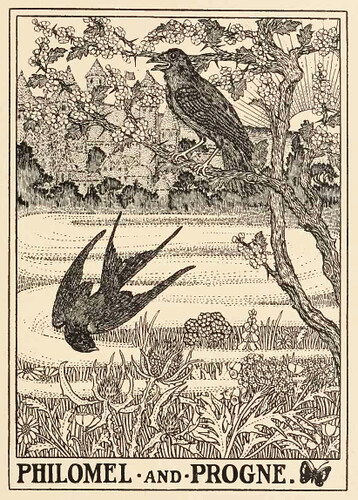540. Luscinia et Hirundo. Hirundo, praetervolans silvam, audivit aliquando lusciniam cantantem, cuius modulatione delectata constitit et, postquam cantare desiit, his verbis compellat, “Luscinia soror, quid hic solitaria agis in silvis et tam mirabiles concentus ac modulationes inter nemora et feras, dignas auribus regum, prodigis ac proiicis? Linque, linque solitudines ingratas et mutas, et confer te ad urbes et homines.” Cui illa, “Noli meae, soror, felicitatis invidere; scio quid urbes et alae regum et turba hominum pariant molestiarum, quas experta sum. Solitudinem amo, innocentiae custodem et asseclam; hic Deo, hic Angelis, hic mihi meas modulationes canto.”
Click here for a
SLIDESHOW of all the Billinghurst images. You can recognize the swallow by the distinctive shape of her tail.
M0540 = Perry277. Source: Irenaeus 281. This is Perry 277. This fable alludes to the mythological tale of Procne and Philomela, the daughters of Pandion, king of Athens. When Procne’s husband, Tereus, raped her sister, Philomela, he then cut out Philomela’s tongue so that she would not be able to denounce him. One version of the legend says that Philomela was then turned into a swallow, while Procne became a nightingale. For a comical take on this tragic story, see #486.
